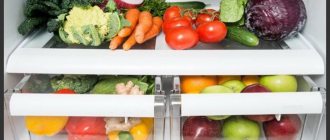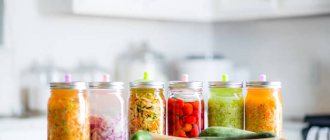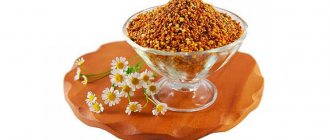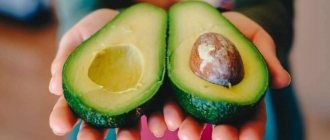Each of us knows where to buy fresh vegetables, especially since today it is very easy to do. But if you are purchasing from for long-term storage, then you need to take care to store the vegetables correctly so that they do not lose their taste and quality.
The problem of preservation is relevant for those who have their own garden, because you want to rejoice and enjoy fresh products for a long time. Therefore, let us further consider the basic rules of how to store vegetables in the basement, in apartment conditions, in the cellar.
General rules
Vegetables and fruits are stored according to the following principles:
- separation - each type of fruit and tuber must have its own container, since some affect the ripeness of others;
- down with mold - at the first sign of spoilage, the fruits are removed and eaten, otherwise the process will quickly spread throughout the container. Therefore, it is important to frequently check food for freshness, especially in winter;
- paper is the best wrapper for unripe fruits and indoor storage;
- freshness zone to help - in the refrigerator compartment for vegetables and fruits the temperature is set optimal for most products from domestic and exotic plantations;
- space - do not pack containers tightly, lay out fruits and vegetables at intervals, in one layer;
- do not store the slices - eat melons, peaches, papaya immediately, but if you don’t want them at all, then eat them the next day at most. Juicy slices will not last a day in the fresh air, but they can be stored in the refrigerator for no more than 2 days;
- Do not wash fruits before storing them in the cold and do not remove them from their original packaging.
Unwashed vegetables are stored in the refrigerator so that residual water does not provoke the development of fungus.
Sliced fruits must be hermetically sealed so that they do not absorb the odors of other products.
Can I use expired products?
Expired mushrooms are strictly prohibited to be consumed in any form. This is fraught with serious consequences for the body: from poisoning to exacerbation of chronic diseases, hospitalization. The processes occurring in them and the substances formed are toxic and dangerous.
Fruits and vegetables whose storage period has expired, but their appearance does not cause concern, can be used after heat treatment: cook compote, jam, make jelly.
If mold is clearly visible on the fruit, the process of rotting has begun, it must be disposed of immediately. Even visually untouched parts should not be eaten. Toxic waste products of microorganisms can cause an allergic reaction, poisoning or systemic disruptions in the body.
What vegetables and fruits are not recommended to be stored in the refrigerator?
Fruits and tubers with high water content do not last long in the cold. They are placed in a paper bag and placed in a dark cabinet in the kitchen, in the pantry. You can put it in a plastic bag, wrapped in a paper towel.
bell pepper
Green remains fresh at 10 degrees Celsius, red and yellow at 7 degrees. Shelf life at low temperatures is 10-14 days.
Eggplant
Without a refrigerator, the blue ones quickly deteriorate, but they don’t last long in the cold either. They are stored in an open bag on the refrigerator door. At +10 degrees, eggplants will retain their elasticity for 6 days.
See also
3 best ways to store churchkhela at home
Potato
The cold converts the starch in potatoes into sugar. The tubers become sweet. Therefore, they cannot be stored at sub-zero temperatures, but should be guided by a range from +1 to +7 degrees.
Melon
The southern berry loses its taste and smell from the cold, but does not tolerate heat. The optimal storage temperature is +5 degrees. Varieties with a strong aroma are stored less. The cut fruits are placed in closed plastic containers.
Mango
Unripe fruits are not placed in the refrigerator, otherwise they will not gain sweetness. Ripe mangoes will last in the cold without packaging for 5 days.
Lemon
Citrus absorbs foreign odors and releases toxins at low temperatures. At +6 degrees, ripe lemons can be stored for more than a month.
Papaya
When frozen, the fruit loses its taste and density. Unripe papaya is also not placed in the cold, but left warm, with bananas next to it, so that it ripens faster. At 20-23 degrees, the fruit will ripen in 3 days. Shelf life at +10 is up to 14 days, at +5 - 7 days.
A pineapple
A couple of days in the refrigerator will maintain the firmness and color of the tropical fruit. Cut pineapple darkens when exposed to cold for longer. An unripe pineapple takes 3 days to develop flavor when kept warm.
Grapefruit
Citrus can be stored at room temperature for up to 4 days.
Tomato
The red vegetable is best preserved at 12 degrees Celsius. When left in the cold for a long time, tomatoes become tasteless and soft.
Bell pepper
When stored in the refrigerator or frozen for a long time, the vegetable loses vitamins. It will keep in paper wrappers in drawers in the kitchen for up to 2 months.
Zucchini
Fresh zucchini quickly becomes moldy in polyethylene. Before storing, they should be wiped with a cloth without rinsing. Zucchini will last 3 months in a dark pantry.
Cucumber
The vegetable gives off a lot of evaporation, so it cannot be stored in a plastic bag. Condensation causes cucumbers to become slippery and moldy. At +15 degrees they will remain fresh for 15 days.
Garlic
In the cold it becomes soft and moldy from the inside. It is better to store unpeeled garlic in the pantry, and store peeled garlic in a tightly sealed container for no more than 2 days.
Basic principles of storing vegetables
Keeping vegetables fresh is quite a difficult problem. When you buy a quality product and at the same time put it in conditions that are suitable, you risk your health. Products that have deteriorated change their appearance, taste, and can no longer be taken as food. Where fresh vegetables are sold, there should be a table that states sanitary storage requirements.
If food sits for a long time, it begins to rot and mold appears. This is due to mold and fungal microorganisms that the human eye simply cannot see.
The most important rule to keep vegetables fresh, whether they come from the garden or from the store, is to remove dirt. At home, fruits can be stored in different forms: frozen, dried, dried, boiled, stewed, canned.
You should always remember that different vegetables have their own shelf life. It is very important to provide the right conditions under which vegetables will retain their beneficial properties. Vegetables that have not been thermally processed are advantageous in this regard. Important rules that need and are important to remember:
- Store each type of vegetable separately. To do this, the varieties need to be sorted and placed on different sides.
- Before storing vegetables, it is important to remove all low-quality fruits where you can observe the appearance of mold or any damage. If you leave this, then all the other vegetables will begin to spoil and the entire harvest will have to be thrown away.
- If we talk about root vegetables, for example, carrots, radishes, beets, radishes, you must definitely cut off the tops.
- Remember and make it a habit to constantly sort through the fruits. After all, they have a habit of rotting. Review your produce so that you don't end up having to get rid of your entire crop.
- Microorganisms that contribute to the rotting of food are very fond of humidity and heat. These two factors must be prevented. Especially when you want to store vegetables for more than a week.
- Remember that those products that have already been peeled will be stored much less. This is due to the fact that the peel contains many useful microelements that are protective for the vegetable. It is also a mechanical barrier that protects against the rapid appearance of mold and mildew. Leaving the product without a peel, it becomes defenseless and dries out quickly.
Most fruits are 70%, and some are 90% water. It is not recommended to place containers with fruits near radiators and other sources that emit heat.
How to properly store greens in an apartment
Green leaves quickly dry out and turn yellow in the sun. Bunches laid out in several layers become stubborn and wither. The best way to preserve green vegetables indoors is to place them in water or wrap them in a damp cloth. In the refrigerator, the freshness of the leaves will maintain the temperature in the vegetable compartment.
Parsley and dill
For cold storage, dried bunches are placed in thin cellophane, wrapped in cling film, and placed in plastic boxes. The chopped seasoning is stored in the freezer in polyethylene.
Shallot
The variety is stored like regular onions, in boxes or bags. Unpeeled shallots will keep for 7 months. Without the husk, it is stored in the refrigerator in plastic containers.
Spinach
The product is usable within 24 hours after collection, regardless of storage location. Then toxins accumulate in it. That's why you can't find fresh spinach in supermarkets.
Lettuce
Whole leaves are stored at 0 degrees in a bag with holes. The chopped lettuce is vacuum packed.
See also
How long can raw eggs be stored in the refrigerator, methods and timing, how to extend
Watercress
Cut leaves are negatively affected by heat. The lettuce variety is placed in plastic containers and placed in the vegetable drawer or on a shelf on the refrigerator door.
Celery
The leaves become soft in cellophane, so they are wrapped in foil and refrigerated. In room conditions they keep the water fresh. The roots of grown celery are stored in boxes with sand, in plastic bags, in an aqueous solution of clay.
Deciduous herbs
Cilantro, tarragon, basil, mint will stand for 2 days in water. In the cold, greens will last 5 days, wrapped in a damp towel.
Woody herbs
Thyme and rosemary are stored in paper packaging in the cold for 14 days.
Arugula
Freshly picked grass will also stand like a green bouquet in water. Large quantities of leaves are packed in zip bags or vacuum sealed and stored in the cold for no longer than a week.
Radicchio
The lettuce variety is also kept in a plastic container in the cold for 4-5 days.
Fennel
Stored at +6…+8 degrees, isolated from other products. A plastic container or wet towel will stop the aroma from spreading.
Herbs
Fresh herbs don't last long.
But some tricks will help avoid premature fading:
- the greens are carefully sorted before laying,
- fresh grass is washed and dried,
- Clean greens are stored in a vacuum container or a tight bag.
There is an easier way to keep your herbs fresh: place them in a container of water.
Storing Fresh Herbs
You can preserve mint, dill, basil and parsley in 3 ways:
- freeze the grass
- dry,
- pickle.
If the fresh herbs have already withered, water slightly flavored with vinegar will help restore their freshness.
List of vegetables and fruits that can be safely stored in the refrigerator
The optimal storage temperature is 0 degrees. All fruits must be ripe, otherwise they will not ripen in the cold and will remain unsweetened.
Apricot
Ripe, slightly soft fruits are stored unpacked or in a paper bag.
Pear
Ripe fruits can be placed in the refrigerator. It is better to put unripe ones in paper containers and place them in a dark, cool cellar.
Peach
They are laid out in one layer and wrapped in paper. Sliced peaches are kept in a plastic container.
Nectarine
The fruits are wrapped in paper and placed in the area for fresh vegetables.
Cherry
Unwashed cherries without cuttings in an open container can be stored in the refrigerator for up to 10 days. In the cellar, the berries are stored in open glass jars, after placing cherry leaves inside.
Turnip
You should not store a lot of root vegetables. It dries out and gets too flavorful. A temperature no higher than 12 degrees Celsius is suitable for turnips.
Avocado
Unripe fruit should lie on the kitchen table until it is ripe. Ripe avocados are placed in a ziplock plastic bag and placed in the fruit and vegetable drawer of the refrigerator.
Raspberries
At room temperature, the soft berry will drain juice in 8 hours. In the refrigerator it is stored in a flat container, laid out in 1-2 layers and transferred with a paper napkin. The container is placed on the middle or lower shelf. Near the freezer, raspberries will freeze and become tasteless. Covered containers will protect the berries from foreign odors.
Gooseberry
Green berries are placed in small containers, liter and half-liter glass jars. Ripe gooseberries will remain cool for 5 days, unripe ones - 10 days.
Currant
White and red varieties are stored for up to 2 months at 1 degree Celsius. Black currants will stand for 5 days without damage to their appearance and taste.
Grape
Firm berries are placed in a plastic bag with a zipper. Overripe grapes cannot be stored.
Kiwi
An open container will provide access to the necessary oxygen for kiwi. Any material is suitable - plastic, polyethylene, paper. At 0 degrees the fruit will remain fresh for 3 months.
Plum
Cardboard trays left over from eggs are convenient for storage. The plums are placed in the vegetable compartment. When the temperature drops, they quickly deteriorate.
Artichoke
Perishable products are stored only in the refrigerator, in plastic bags or containers.
Broccoli
The stems should be placed in water and the inflorescences should be covered with a damp towel.
Ginger
The root is stored in a plastic, paper wrapper for a week in the refrigerator compartment for vegetables.
Rhubarb
The washed, dry product is stored in vacuum packaging for no longer than 2 days.
See also
The best shoe storage system at home and organization rules
According to GOST
The law establishes norms through standards:
- GOST R 57976-2017 “Fresh fruits and vegetables. Terms and Definitions" establishes the classification and requirements for products.
- GOST 33977-2016 “Processed products of fruits and vegetables. Methods for determining the total content of dry substances."
- GOST 33823-2016 “Frozen fruits. General technical conditions".
- SanPiN 2.3.2.1078-01 “Hygienic requirements for the safety and nutritional value of products.”
- GOST 31916-2012 Mushrooms. The champignons are fresh. Refrigerated storage and transportation.
Previously valid GOST 51808-2013, 54697-2011 have been cancelled.
Dear readers! To solve your problem right now, get a free consultation
— contact the lawyer on duty in the online chat on the right or call: +7 (499) 938 6124 — Moscow and region.
+7 (812) 425 6761 — St. Petersburg and region. 8 (800) 350 8362 - Other regions of the Russian Federation You will not need to waste your time and nerves
- an experienced lawyer will solve all your problems!
How to store it correctly
A separate category is fruits that are demanding on temperature and conditions.
Apples
They are stored for a long time in the upper zone of the refrigerator. At room temperature they remain fresh for up to 2 weeks.
Bananas
Low temperatures are contraindicated for them. They are stored in cardboard boxes in a cool, dry place.
Strawberries
Without special conditions, freshly picked berries will retain their beautiful appearance for 24 hours. At +6 degrees, strawberries will be stored for 4 days, and temperatures from 0 to 2 degrees will keep the berries fresh for 7 days.
Melon
Hard, unripe fruits are stored for a long time. Late ripening varieties last longer than early varieties. Melons are laid out in the cellar at intervals, lined with sawdust, and hung in nets. For storage on the balcony you need boxes and sand. A loose layer of sand on top of the melons will slow down the evaporation of moisture, but will not impede breathing. Ripe fruits can be placed in the vegetable compartment of the refrigerator.
Plum
The fruit should be protected from the sun. They are placed in the shade on the balcony. Plums are not wrapped in plastic. In cardboard packages they are laid out in one layer.
Grape
White and dark varieties are stored at 0…+7 degrees. On the balcony, grapes can be stored in cardboard or wooden boxes. In the refrigerator it is kept in the fruit compartment, in a paper wrapper.
cucumbers
Winter and spring varieties sold in stores will last in paper for a week on the bottom shelf or in the vegetable area of the refrigerator. It is better to allocate a shelf in the pantry for cucumbers from the garden and put them in a box.
Carrot
Unpeeled and unwashed vegetables are stored in a plastic or paper bag. Carrots can be stored in the refrigerator for 2 weeks.
Asparagus
The stems are placed in water or wrapped in a damp towel.
Tomato
Vegetables are placed in paper bags and placed in the pantry.
To store tomatoes for longer than 3 days, they can be placed on the bottom shelf of the refrigerator.
Zucchini
The best storage place is a pantry, a cool cellar. Vegetables will remain fresh for 5 days.
Potato
Stored in paper packaging in a cool, dark place. To prevent the tubers from sprouting, you can add a couple of apples to them.
Garlic
Unpeeled garlic heads are stored at room temperature. Suitable storage places are a dark pantry, closet, cellar.
Beet
Root vegetables are stored in boxes on the balcony. But in the frosty winter they are brought into the apartment and placed in a cool place.
Mushrooms
Champignons love cool weather, but will withstand up to +12 degrees. They are stored in paper on the bottom shelf of the refrigerator for a week.
Radish
Like beets, they are stored in boxes at room temperature, but not lower than 6 degrees.
Okra
Vegetables stay fresh for 3 days in paper in the refrigerator compartment for vegetables.
Peas
The pod culture is stored for 3 days at above-zero temperatures.











